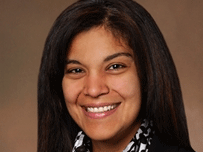Final Thoughts
By Comilla Sasson, MD
 (November 2012) I wasn’t even supposed to work that night. I had finished a long day of
(November 2012) I wasn’t even supposed to work that night. I had finished a long day of
“Just power through until 8 am,” I thought. “Nothing too bad happens on Thursday nights.”
The Emergency Department (ED) was full, with another 10 patients in the waiting room. We were on “divert,” meaning ambulances would bypass
Then at about 12:30 am a call came in over the dispatch radio. There’d been a shooting at an Aurora theater. Nine minutes later, we received a frantic police call. Multiple shooting victims. Not enough ambulances. Officers would haul patients to hospitals, including ours. So much for divert.
The first police car showed up at 1:06 am. It looked like a crime scene, with blood splattered throughout. As we pulled the first two victims out of the car, another arrived. And another. And another. In total, nine police cars and an ambulance rolled in within 45 minutes.
I had done my residency training in emergency medicine at the only Level One trauma center in Atlanta. But nothing had prepared me for that night. The sheer number of patients and the seriousness of their wounds left us no time to think. We had no information on the patients before they arrived, but they were lucky that the police decided to take action quickly.
This was a night of adrenaline and instinct.
As the attending ED physicians, Dr. Barbara Blok and I stationed ourselves in the ambulance bay so that we could assess patients. We were in official disaster mode. Operating rooms were opened, surgeons and nurses raced to the ED, along with residents who’d been paged by one of their quick-thinking colleagues.
We were running a chess game—coordinated chaos as we rotated the nine most critically injured patients in and out of resuscitation so we could place them on ventilators or put tubes in their chests to drain their lungs of blood.
We cared for victims with bullets through the head, chest, abdomen, neck
In total, 23 patients arrived within two hours of the incident. Our amazing team worked all night and morning with these patients, most of whom were between 16 and 30 years old. Many of us were thinking that if we hadn’t been working that night, we too might have been at that movie theater.
I am proud that every single patient who arrived with a pulse that night, 22 of the 23, is still alive today. People talk about the “Aurora massacre,” but to me, considering how many seriously injured people were saved, it was the “Aurora miracle.”
Many of us were unable to sleep later. When we closed our eyes we saw intestines dangling and chest tubes
What haunted us most was that our emergency patients were … gone. Who were they? Had they survived?
A few days later, a group of us from the ED went upstairs to visit with victims. When we walked into the room of the first patient, she recognized some of us and, through her pain, said, “Give me a hug.” We all started sobbing. She was alive and able to smile, her family surrounding her.
That vision, and others like it—those have replaced the horrific ones from that night.
The patients we helped are now healing us.
Comilla Sasson, MD, MS, is an attending physician at the University of Colorado Hospital and assistant professor in the Department of Emergency Medicine at the University of Colorado.